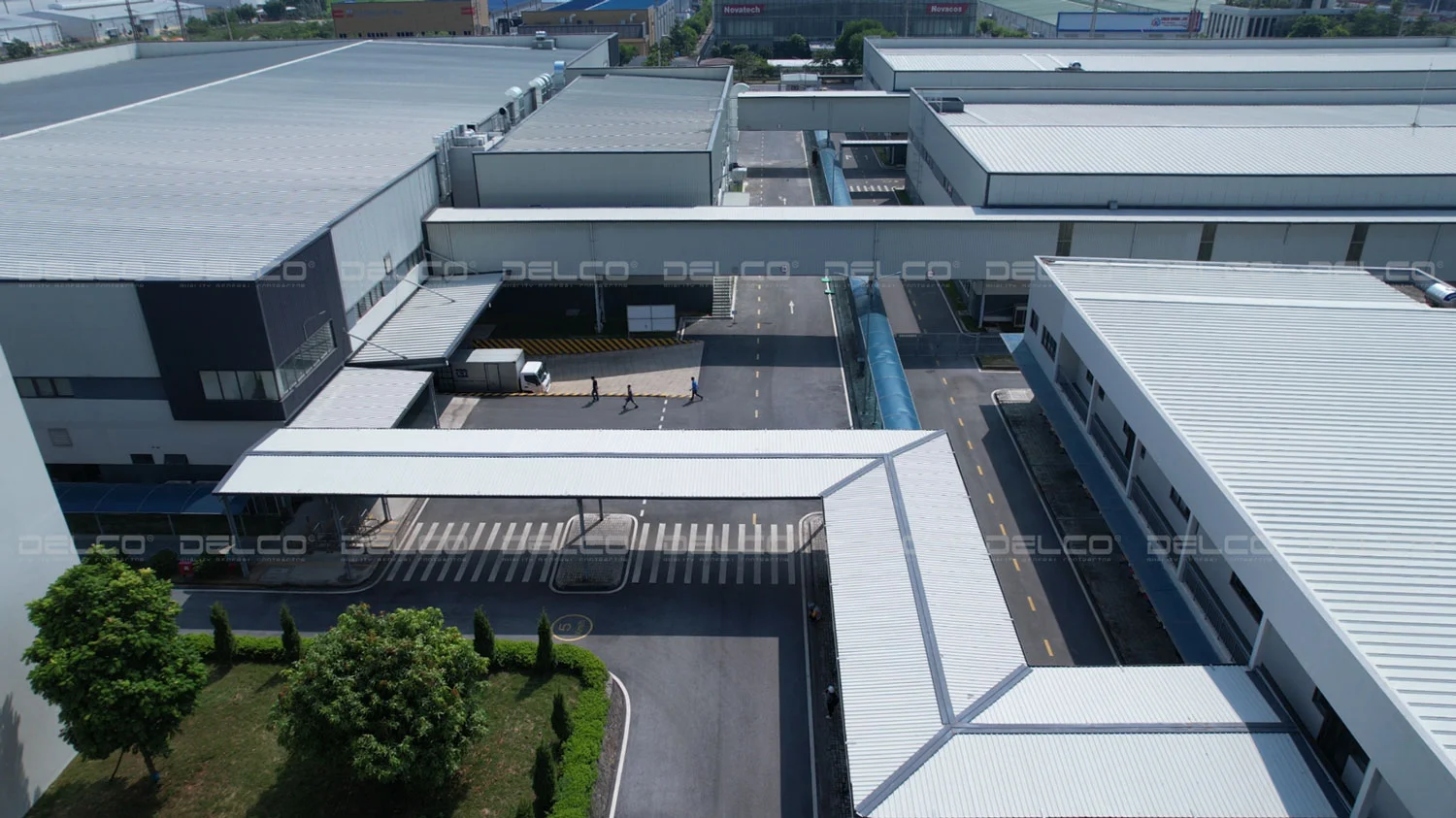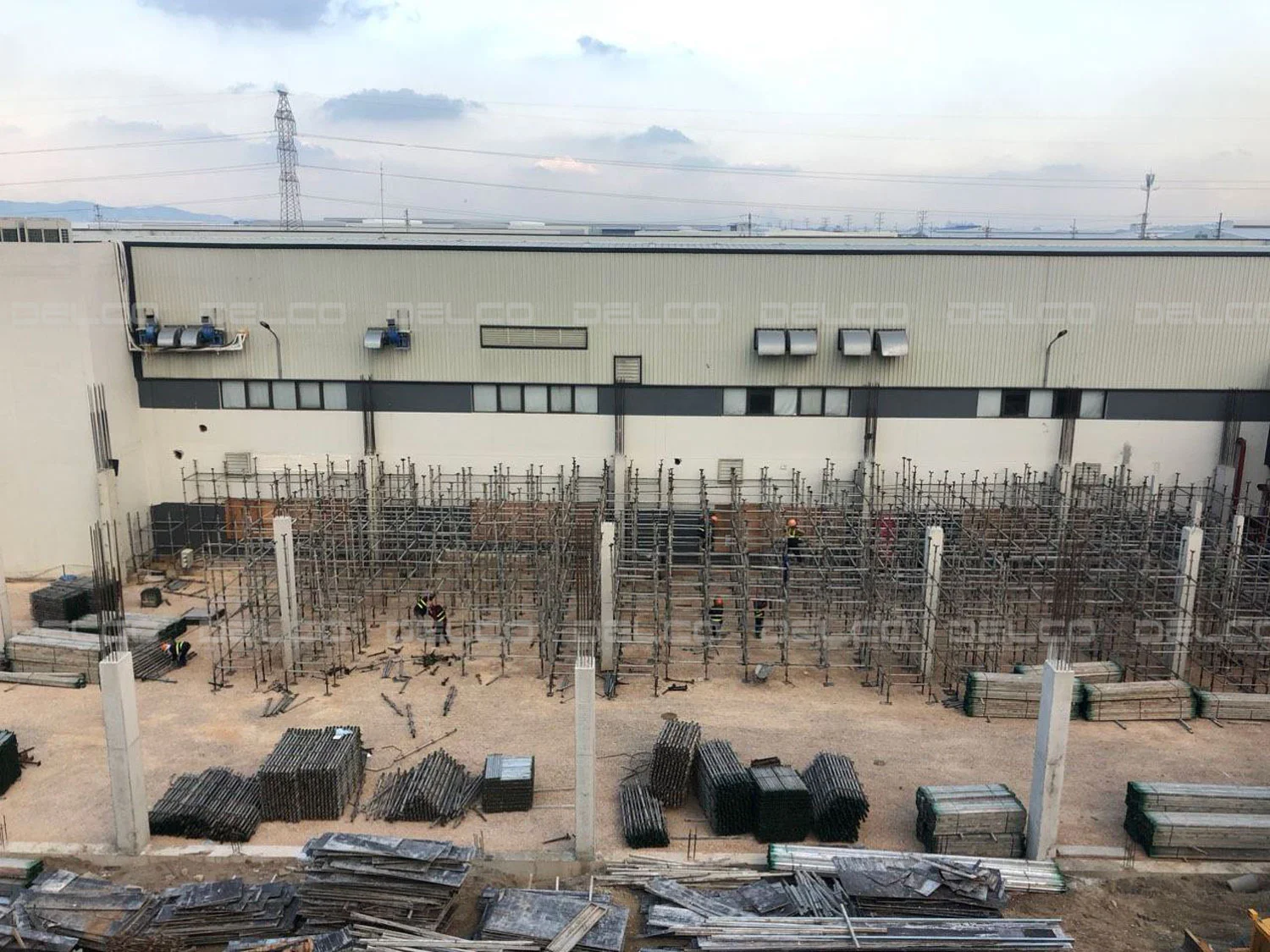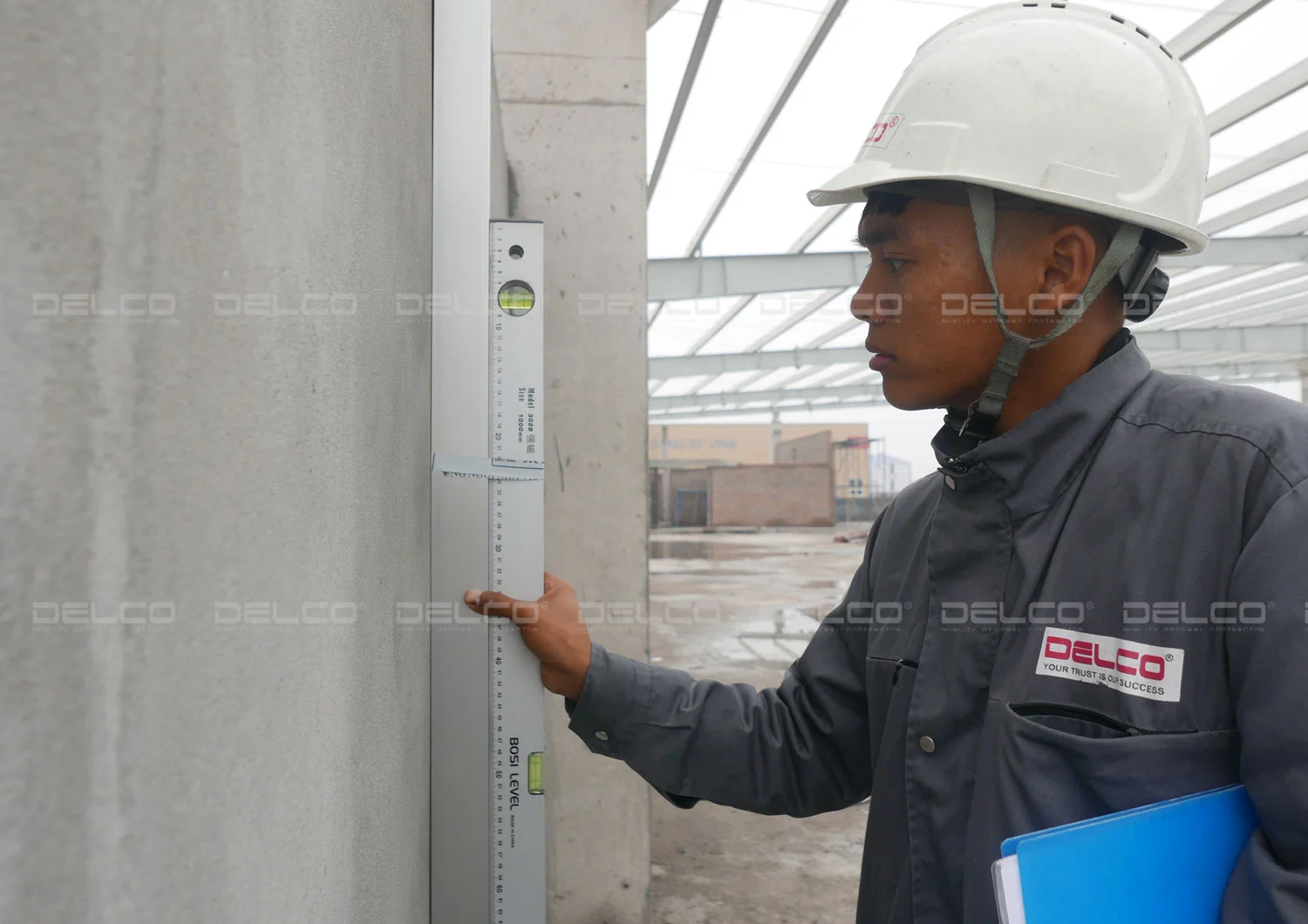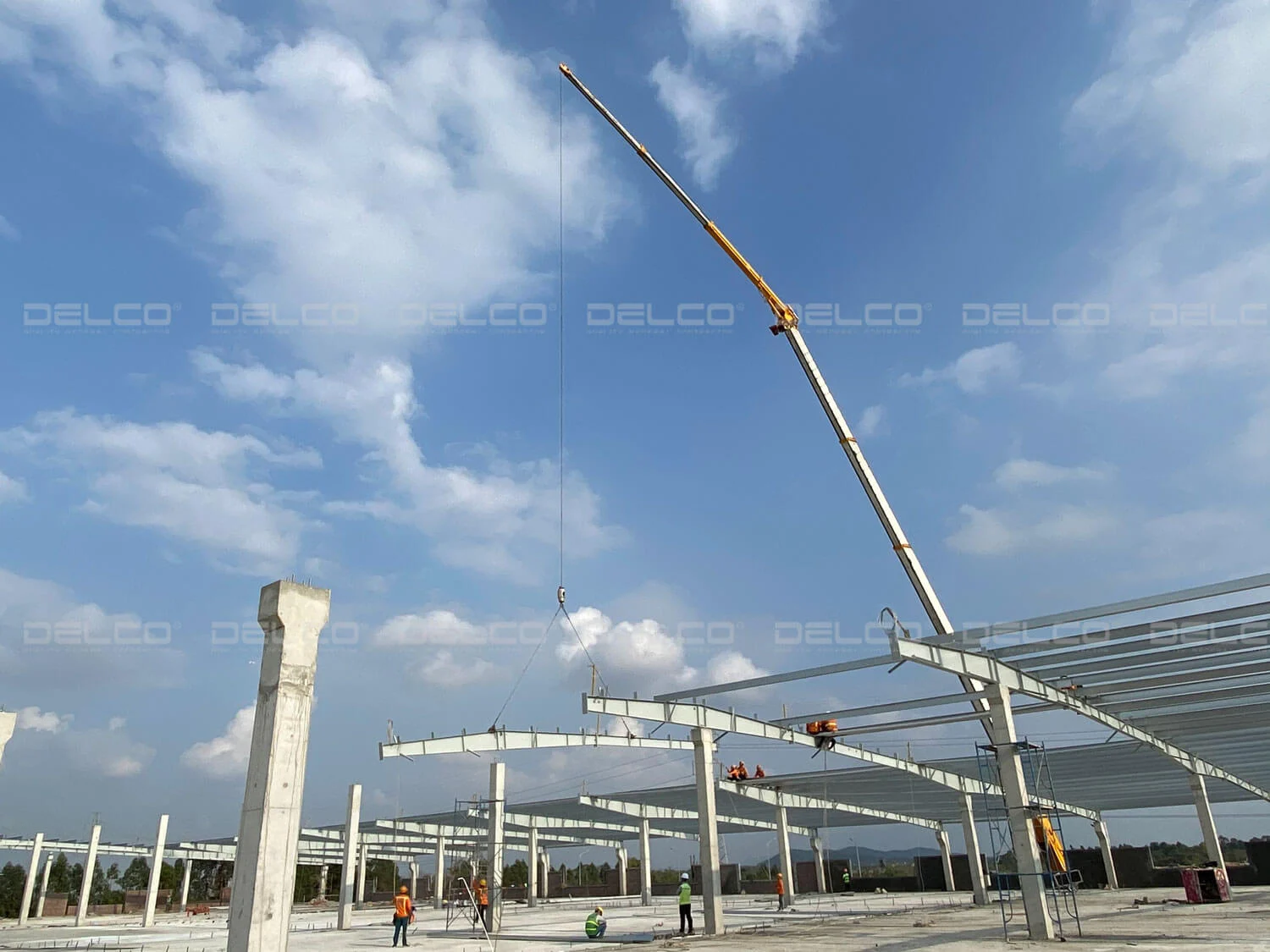Wall cracking is a common issue, but it can be effectively controlled if the design, construction, and curing are carried out using proper techniques.
Causes of cracking in factory walls
Some common causes of wall cracking in factories include:
- Shrinkage and temperature changes: During the hardening phase, concrete and mortar tend to shrink and are also affected by environmental temperature fluctuations.
- Soil settlement and structural displacement: In cases where the soil is weak or load distribution is uneven, localized settlement may occur, leading to wall cracks.
- Architectural details: Areas around windows, openings, and wall corners often experience stress concentration, making them prone to cracking.
- Construction defects: Using low-quality materials, improper mortar mixing, and insufficient post-construction curing all contribute to a higher risk of cracking.
Crack prevention in factory walls
Controlling shrinkage and temperature
During construction, controlling shrinkage and temperature is a key factor. Contractors should use shrinkage-reducing admixtures or superplasticizers to enhance the stability of the concrete mix.
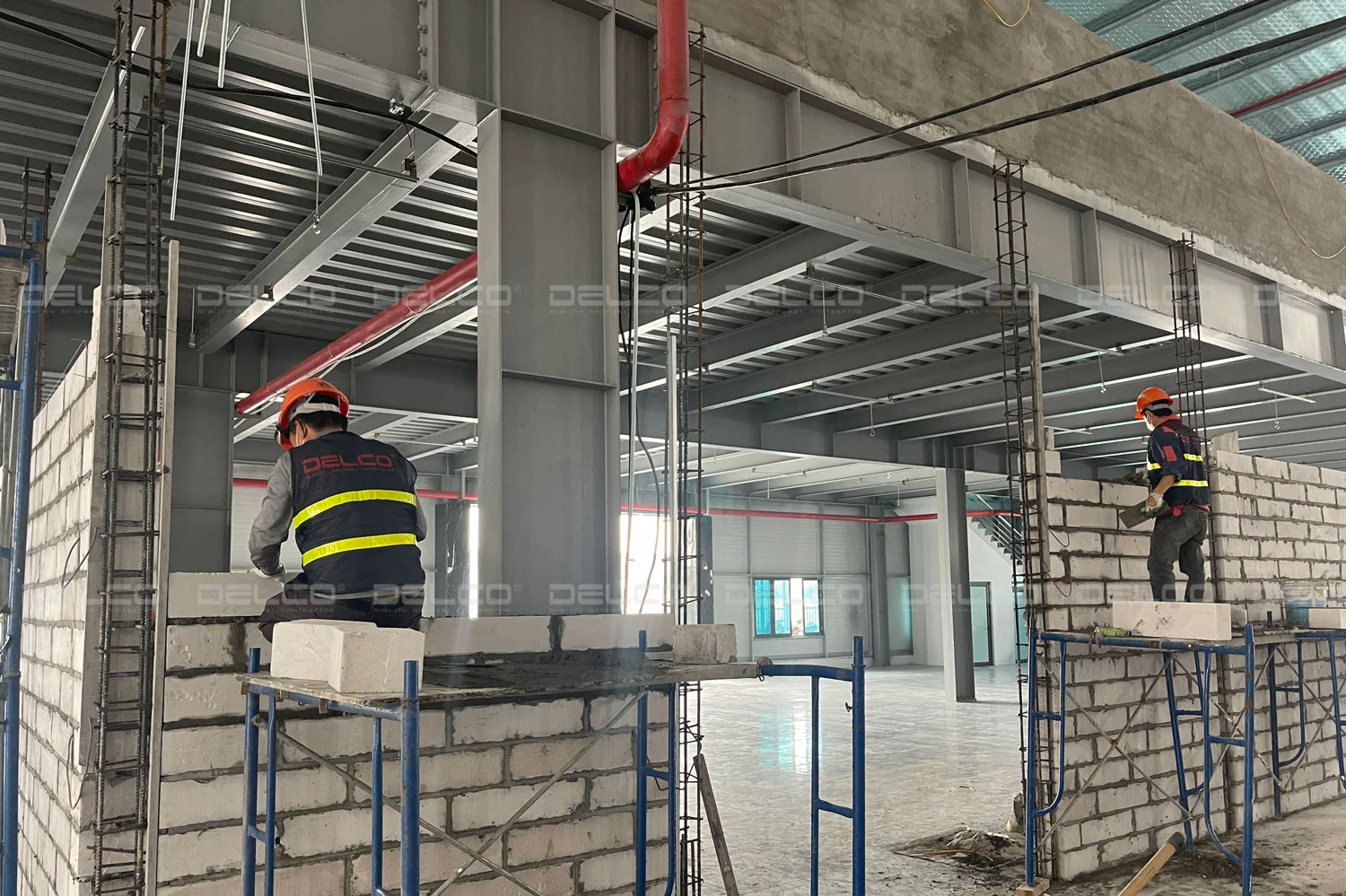
DELCO applies lightweight ACC blocks combined with additives during bricklaying and plastering to enhance bonding and prevent wall cracking.
The timing of bricklaying and plastering must also be carefully planned. Excessive rain or high humidity can reduce mortar strength. Under rainy conditions, exterior plastering must be avoided, as the mortar may be washed away before it sets, leading to surface peeling and reduced quality. After plastering, the wall surface must be cured, kept moist, and watered for one to two days to minimize cracking caused by rapid drying.
Designing and positioning technical joints
One important consideration when building factory walls is the use of expansion joints in long wall sections to relieve internal stress and prevent widespread cracking. In areas with weak soil, settlement joints should be included between wall segments to separate structural movements and reduce the risk of deformation affecting the walls. Window and door openings should also be reinforced with steel bars to distribute stress and prevent force concentration that can lead to cracking.
Reinforcement and finishing
Additionally, reinforcement using mesh and fibers is widely applied. Fine steel mesh or fiberglass mesh can be embedded within the plaster layer to improve ductility and minimize hairline cracks. At joint locations, the use of elastic materials allows the structure to better accommodate natural expansion and contraction. Furthermore, selecting appropriate finishing solutions—such as specialized coatings—also plays a critical role in limiting cracks.
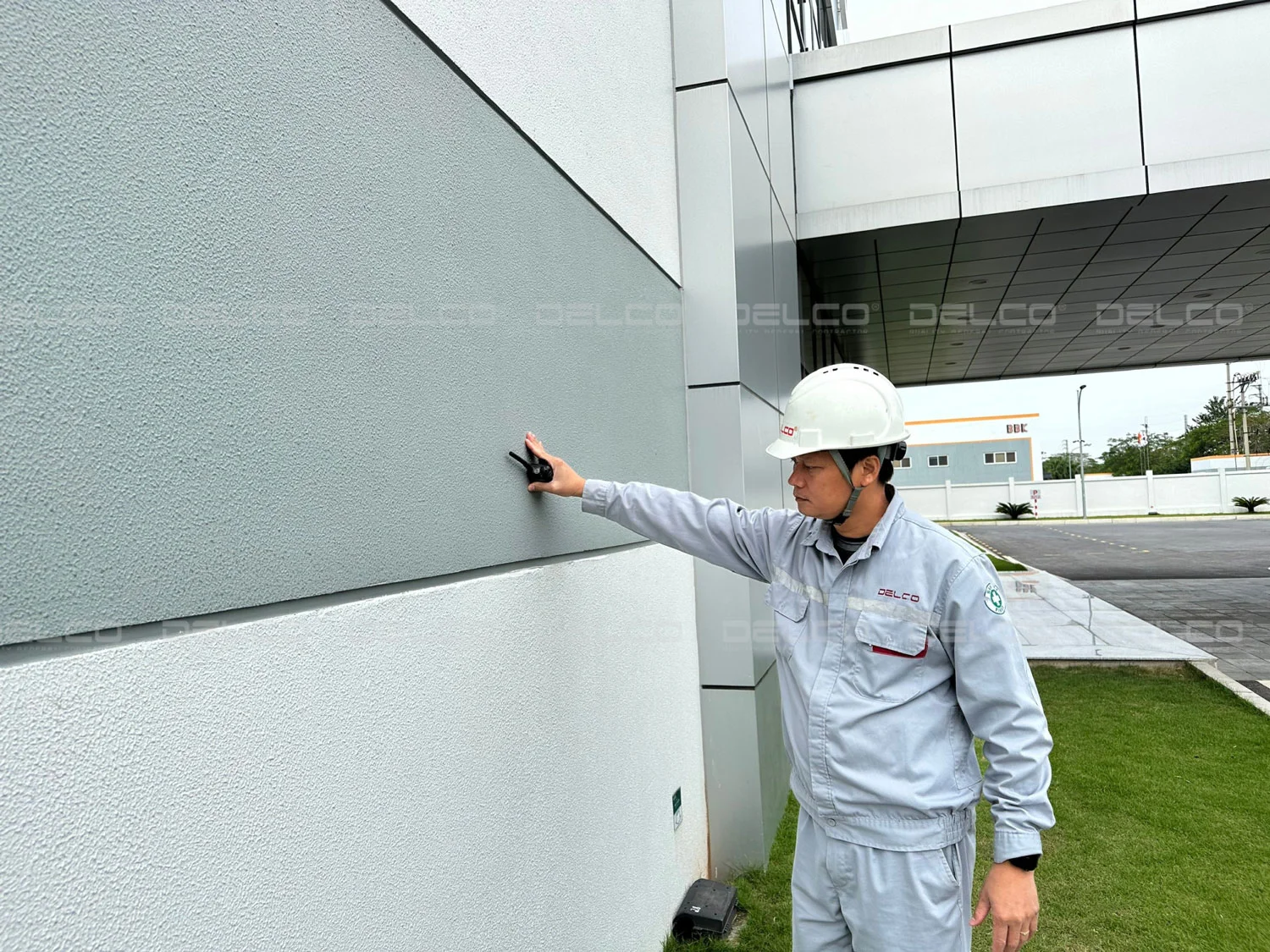
DELCO applied elastic coating at the DORCO Living Vina factory in Ha Nam, to help prevent hairline cracks on wall surfaces while extending the durability of the finishing layer.
Construction quality management and supervision
Construction management and quality supervision must be maintained throughout the entire process. When developing a factory project, investors should prioritize selecting experienced contractors who use standardized materials and follow a well-defined construction and quality control process—from material selection and design to implementing crack prevention measures, finishing work, and final inspection. This ensures the project meets quality and aesthetic standards while minimizing maintenance costs during operation.
See also: Factory wall construction quality control process
See also: Elastic coating: The ideal choice for factories and industrial buildings in tropical climates


